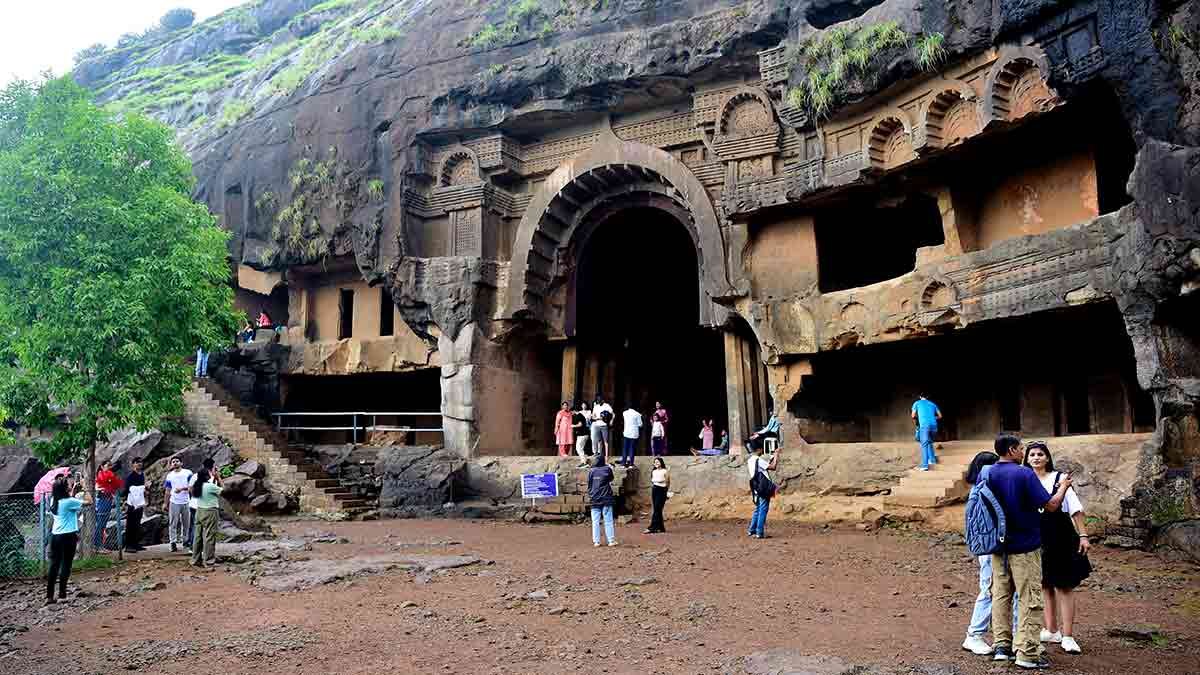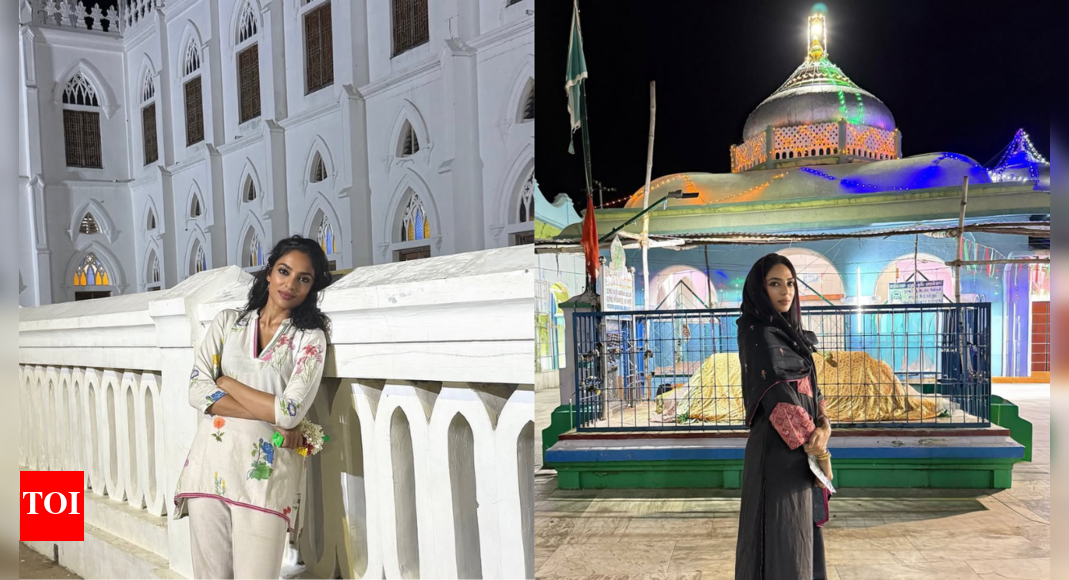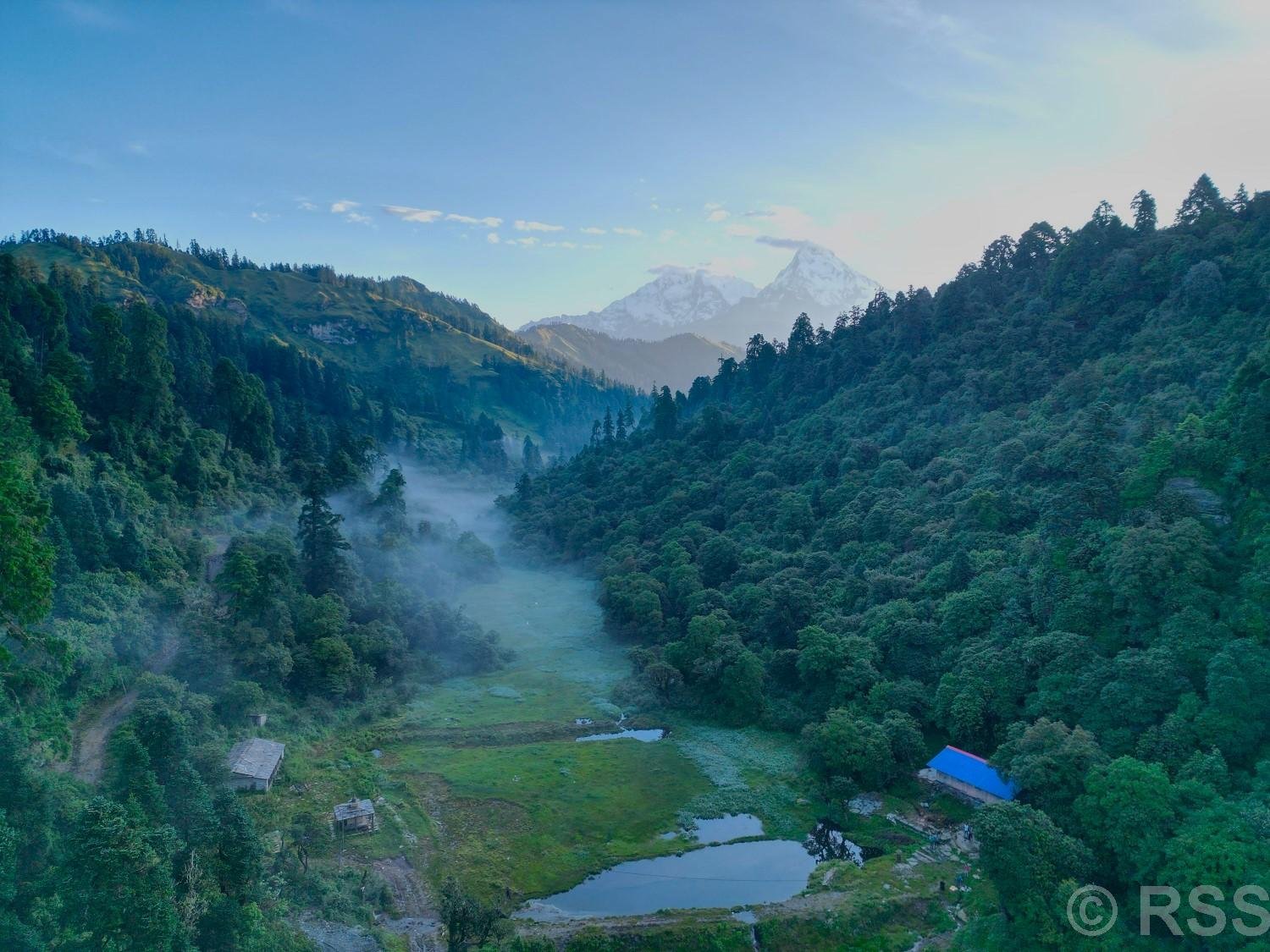Spiritual Travel
The Traveler’s Path: Finding Spiritual Growth and Inspiration Through Travel

The Traveler’s Path: Finding Spiritual Growth and Inspiration Through Travel by Doug Brouwer is a book for sojourners, and, if I’m not mistaken, that label applies to all of us.
After all, as the book says in its first line, “Travel is our origin story.” Among the many things that make this book important is its congruity with humanity’s story through the ages, as contained in the Bible. Have you ever stopped to think about how much of the Bible happens during a long walk? When Elijah is taken up to heaven by a whirlwind, he and Elisha were walking from Gilgal to Jericho. When Jesus wanted to impress upon his disciples just how significant their work would be in a fallen and broken world loved by God, he led them on a walk forty-two miles north from Capernaum to the wild world of Roman debauchery and excess in Caesarea Philippi. All the recorded missionary journeys of the Apostle Paul add up to nearly 10,000 miles—all for the purpose of telling everyone everywhere that Jesus, not Caesar, is Lord.
Humanity has always been on the move. And, as this book reveals, Doug Brouwer has been on the move much of his life. After growing up in Grand Rapids and attending Calvin College, he headed to Princeton Seminary in New Jersey. From there he’s served a series of Presbyterian churches throughout the United States and late in his career pastored churches in Switzerland and the Netherlands. Over the years, Doug’s led countless trips on several continents and done pilgrimages on the Spanish and Portuguese Caminos. The book makes clear that Doug’s travel experiences have been a vital part of his spiritual and pastoral development.
My eyes were opened as I learned about Stolpersteine, “stumbling stones, commemorative brass markers, carefully placed in the sidewalk outside the former home of someone who had been ruthlessly rounded up and killed in a Nazi death camp.” Doug tells of a Stolpersteine near where he lived in the Netherlands: “Here lived Robert K. Herrmann, born 1896, deported 1944, murdered January 16, 1945, Bergen-Belsen.” Alongside it was another, “Here lived Gertrude F.J.M. Hermann-Katz, born 1901, deported 1944, murdered February 3, 1945, Bergen-Belsen.”
I found this sobering and chilling.
Doug goes on to say, “I imagined their lives on De Mildestraat, the name of their street. I gave thanks for them, and I lamented a world where the murder of millions of human beings might be planned and carried out with such brutality.” The Stolpersteine throughout Europe raise questions, more pertinent today than ever, about how nations tell (or attempt to gloss over) the tragic and painful parts of their histories. How do we tell of our atrocities?
Stolpersteine are but one part of the Doug’s travel experiences. In the book he writes about various mission trips, pilgrimages, the power of learning new languages, and even goes inside various prisons around the world. In it all, his keen power of observation shines through.
Carl Jung, is credited with saying, “Hurry is not of the devil, it is the devil.” Our crazy and mixed up world urges us to rush past everything—and, according to Jung, that’s demonic. Doug Brouwer urges us to slow down and pay attention.
The book is full of stories, which makes it a fun and interesting read. Doug’s stories of guiding trips to the Middle East brought back memories of the years I led similar trips. In 1999, I was set to lead a group to Israel that included several students from Western Theological Seminary. One night a thought came to me: wouldn’t it be wonderful if Eugene and Janice Peterson came with us? I called Eugene at his home in Montana and to my great joy and utter astonishment he accepted my invitation. There was one condition—he wanted to just be one of the hikers. What a gift it was to walk the land of the Bible in his presence. I still see many of the students from that trip. Repeatedly, they mention how that trip, which was not much more than a long, unhurried hike, set the trajectory of their pastoral ministry. When Doug Brouwer claims that spiritual growth can come through travel, I remember that trip and nod my head in agreement.
There is a beautiful moment in Thorton Wilder’s Our Town when Emily Gibbs, who died giving birth to her second child, is allowed to return to earth to see her family—without being seen by them, assisted by a character simply known as the Stage Manager. She is deeply pained to see how everyone is talking past one another and not reveling in the sacred moments of life. In her anxiety, she turns to the Stage Manager and says, “Do any human beings ever realize life while they live it? – Every, every minute?” The Stage Manager replies, “No. The saints and poets, maybe they do some.”
Doug Brouwer is both a saint and a poet. His lifelong avocation as a traveler has trained him to see and experience things that most of us glide past. Do yourself a favor: before setting off on your next adventure, pick up a copy of The Traveler’s Path: Finding Spiritual Growth and Inspiration through Travel.
Related
Spiritual Travel
Atul Patne, Maharashtra tourism principal secretary- The Week

Interview/ Atul Patne, Principal secretary, tourism, Maharashtra
Maharashtra’s tourism potential is vast—ranging from beaches and heritage sites to wildlife reserves. In an interview, the state’s Principal secretary, tourism, Atul Patne, explains what makes his state a unique travel destination. Excerpts from an interview:
What is your strategy to position your state as a year-round destination?
Maharashtra is already a year-round destination. From beaches, heritage sites, and wildlife reserves to mountains, food, festivals, spirituality and adventure, Maharashtra truly has something for every traveller, every time of the year.
Unlike many northern states, Maharashtra enjoys a moderate climate. The monsoon season sees a significant influx of domestic tourists. From October to March, we witness strong international footfall. Even during the peak summer months of April and May, our beaches and coastal destinations remain popular.
How do you plan to promote lesser-known destinations like Lonar and Amboli?
Destinations like Lonar and Amboli are already gaining popularity, particularly among young travellers and special interest groups such as nature clubs, bird-watchers, photographers, cyclists, bikers, and road trip enthusiasts—largely thanks to social media. A special tourism circuit is being developed connecting Nashik, Nagpur, Chhatrapati Sambhajinagar, and Lonar, supported by enhanced rail and road connectivity.
How is Maharashtra aligning its tourism development goals with sustainability and environmental protection, especially in ecologically sensitive areas?
This is a topic very close to my heart. We are promoting responsible and sustainable tourism through policies that encourage homestays, bed-and-breakfast accommodations, and small hospitality ventures—especially those led by women under the AAI scheme.
Do you have plans to revamp branding and marketing outreach?
We have significantly stepped up our marketing efforts, focusing on young, adventure-seeking audiences. Our campaigns showcase Maharashtra’s rich history, forts, coastline, Sahyadris, spiritual sites and vibrant cuisine. Innovative initiatives include inviting global food experts to promote our cuisine and organising a walkathon during the centuries-old Pandharpur Wari pilgrimage. For business tourism, we have established the Maharashtra Convention Bureau to attract MICE events.
What role does rural and agro-tourism play in your vision for inclusive tourism development?
It is central to our sustainable tourism policy. Through the AAI scheme, we are enabling villages to become tourism hubs. A successful model has already been implemented in Chinchani near Solapur. These initiatives generate local employment, preserve rural traditions, and reduce migration of young people to cities.
Could you talk about upcoming infrastructure projects that aim to boost tourism?
Our tourism policies include incentives for large-scale projects like aquariums, island development, and theme parks. We are actively encouraging public-private partnerships under the Viksit Maharashtra 2047 vision. NRIs are also being invited to invest in their ancestral towns to aid local development and tourism infrastructure.
Are there dedicated efforts to revive heritage tourism with guided storytelling, digital experiences, or festivals?
Forts are the pride of Maharashtra, and we are working closely with the ASI to take over select sites for development. Plans include experience centres, museums, immersive AI domes, and festivals that celebrate our forts, food and cultural heritage.
What are you doing to improve tourist experience, especially in popular but crowded spots like Lonavala or Shirdi?
We are focusing on behavioural change through clear signages, awareness campaigns and messaging to encourage responsible travel. Fines and regulations are being strengthened. At the same time, we are working on deploying a tourism security force and are conducting safety audits—especially for adventure operators. We want to bring about the change in the mindset of the crowd and that is a daunting task, but we will get there.
Ultimately, both tourists and authorities must share the responsibility to maintain these destinations. As for safety, we are setting SOPs for adventure tour operators, ensuring safety audits, deploying tourist police. These are some of the plans in the pipeline.
What is your vision for Maharashtra in the next five years?
Our goal is to make Maharashtra the number one tourism destination in India. We aim to do this through a model that is sustainable, inclusive, humanitarian and community-driven.
Spiritual Travel
Sobhita Dhulipala visits Velankanni Church and Nagore Dargah during spiritual trip to Tamil Nadu – Watch |

Actor Sobhita Dhulipala recently shared some pictures of her spiritual getaway in Tamil Nadu. The ‘Made in Heaven’ star took to Instagram on Thursday to share glimpses from her serene trip, which included visits to the iconic Velankanni Church and Nagore Dargah.
At Velankanni Church and Nagore Dargah
The actor shared photographs of her travels in her post with the title of “Life lately.” In these images, Sobhita was seen in a white outfit praying at the Velankanni Church, known formally as “The Basilica of Our Lady of Good Health”. The church is one of India’s most frequented Catholic shrines.Sobhita also visited the Nagore Dargah, a prominent Sufi shrine in Tamil Nadu located in the coastal town of Nagore. For this visit, she wore a black outfit, which complemented the modesty of the Dargah as well as fit with the overall spiritual tone of the site. The Dargah is the final resting place of the Sufi saint Nagore Syed Abdul Qadir Shahul Hamid.
Enjoying the beach
Sobhita also shared pictures of herself enjoying some peaceful moments at the beach as the waves washed over her feet. One photo shows her, with a calm expression on her face, relishing the sun and the joy of the moment. Another photo shows her feeling completely joyful alone. She also shared a photo looking beautiful in a gold saree from a friend’s wedding.On the work front, Sobhita was last seen in ‘Monkey Man’, Dev Patel’s directorial debut, which did not see a theatrical release in India. She also starred in ‘Love, Sitara’, but has remained quiet about her upcoming projects.Sobhita made headlines last year after she got married to Telugu star Nag Chaitanya after a long rumoured relationship.
Spiritual Travel
Jaljala holds potential for religious tourism but remains neglected « Khabarhub

Jaljala area in Myagdi/RSS
MYAGDI: Jaljala, located at the tri-junction of Myagdi, Parbat, and Kaski districts, holds significant religious and tourism potential but remains largely neglected due to lack of infrastructure and promotion.
The Jaljala area, spanning Modi Rural Municipality in Parbat and Annapurna Rural Municipality in Myagdi, is referred to in Hindu scriptures as Hampal, Kalanjar, and Mrigasthali. Despite its religious importance, the area suffers from underdevelopment and poor accessibility.
According to cultural and heritage expert Prof. Dr. Jagannath Regmi, Hindu scriptures including Agni, Garuda, Kurma, Baraha, Skanda, Shivamaha, Padma, Brihannaradiya, Linga, Matsya Puranas, the Mahabharata, and the Shrimad Bhagavatam mention Hampal and Kalanjar.
“Despite being praised in sacred texts, Kalanjar—highlighted by Muktakantha in mythological literature—remains underdeveloped due to lack of publicity, remoteness, limited road access, and the absence of documented materials beyond oral traditions and natural and cultural sources,” said Regmi.
He noted that some ancient temples, shelters, and caves in the area are now at risk of disappearing due to a lack of protection. Religious texts claim that sages once performed penance in the Jaljala region, using its herbs for medicine, gaining spiritual insights, and offering Pinda (ancestral offerings) to attain salvation.
Tika Pun of Lespar, Modi Rural Municipality-4, who operates a small restaurant in Jaljala, said that due to limited awareness of the site’s religious and scenic value, tourist and pilgrim numbers remain low.
“Visitors mainly arrive during Mahayagyas held in autumn and spring. Otherwise, the place remains deserted,” he added.
Situated at an altitude of 3,300 meters, Jaljala features a gorge surrounded by breathtaking views of the Annapurna range. Just two decades ago, locals from Jaljala and Modi Rural Municipality used to graze cattle here during the monsoon, a practice that has since vanished.
From Jaljala, a 10-minute walk to Wi-Fi Hill offers views of Annapurna, while a 30-minute hike to Mateko Lake reveals panoramic views of Dhaulagiri, Annapurna, and Machhapuchhre.
According to Govinda Sharma, a visitor from Kushma, the scenic beauty of the region and surrounding settlements makes the challenging journey worthwhile.
Jaljala is also rich in biodiversity. Medicinal herbs such as bojo, satuwa, chiraito, amilo, brahmi (bholatapre), pashanbhed, jethimadhu, padamchalnu, niramasi, jatamasi, timmur, and siltimmur are found here. Wildlife sightings include deer along the banks and birds like vultures, cuckoos, and owls.
The region is accessible by trekking routes from Ghodepani, Pun Hill, Mohare Danda, Nagi (in Myagdi), and Modi Rural Municipality in Parbat. A dirt road connects Jaljala to Lekphant and Shalija in Jaljala Rural Municipality, according to Vice-Chairman Deepak Acharya.
“A grand yagya was organized to highlight Jaljala’s religious significance, and electricity has now been extended to the area,” Acharya said. “The federal government has allocated Rs 30 million for tourism infrastructure development here.” The Beni–Lekphant road has also been blacktopped recently, and further road upgrades have been requested.
-

 Brand Stories3 weeks ago
Brand Stories3 weeks agoBloom Hotels: A Modern Vision of Hospitality Redefining Travel
-

 Brand Stories2 weeks ago
Brand Stories2 weeks agoCheQin.ai sets a new standard for hotel booking with its AI capabilities: empowering travellers to bargain, choose the best, and book with clarity.
-

 Destinations & Things To Do3 weeks ago
Destinations & Things To Do3 weeks agoUntouched Destinations: Stunning Hidden Gems You Must Visit
-

 Destinations & Things To Do2 weeks ago
Destinations & Things To Do2 weeks agoThis Hidden Beach in India Glows at Night-But Only in One Secret Season
-

 AI in Travel3 weeks ago
AI in Travel3 weeks agoAI Travel Revolution: Must-Have Guide to the Best Experience
-

 Brand Stories1 month ago
Brand Stories1 month agoVoice AI Startup ElevenLabs Plans to Add Hubs Around the World
-

 Brand Stories4 weeks ago
Brand Stories4 weeks agoHow Elon Musk’s rogue Grok chatbot became a cautionary AI tale
-

 Brand Stories2 weeks ago
Brand Stories2 weeks agoContactless Hospitality: Why Remote Management Technology Is Key to Seamless Guest Experiences
-

 Asia Travel Pulse1 month ago
Asia Travel Pulse1 month agoLooking For Adventure In Asia? Here Are 7 Epic Destinations You Need To Experience At Least Once – Zee News
-

 AI in Travel1 month ago
AI in Travel1 month ago‘Will AI take my job?’ A trip to a Beijing fortune-telling bar to see what lies ahead | China
